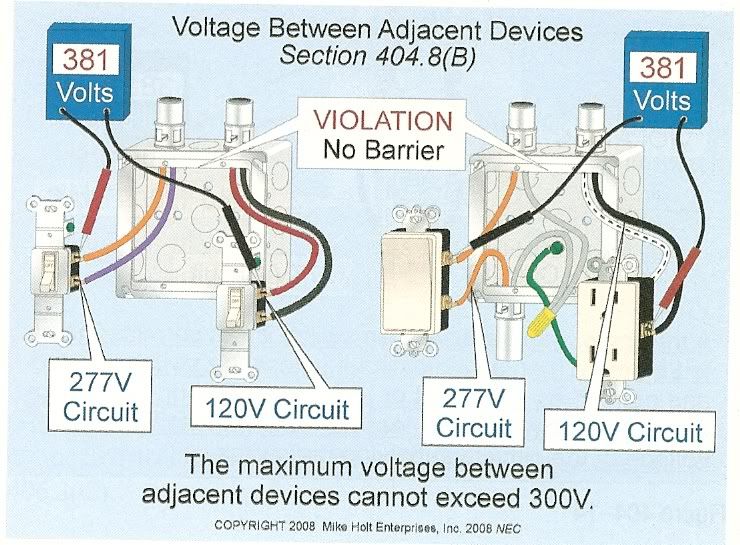slalom skier
Member
- Location
- Royal Palm Beach FL. USA
A few of the Foreman at work are stating you can not splice both 120 and 277 in the same box I can not find any thing in the code book that says you can not do this. If it is a violation what code article would it be?


